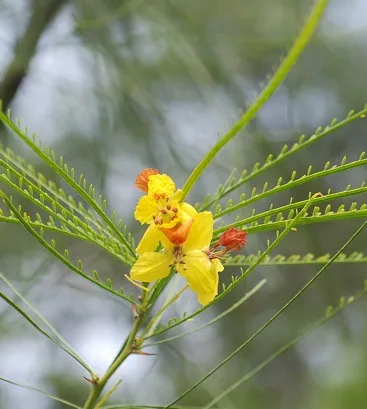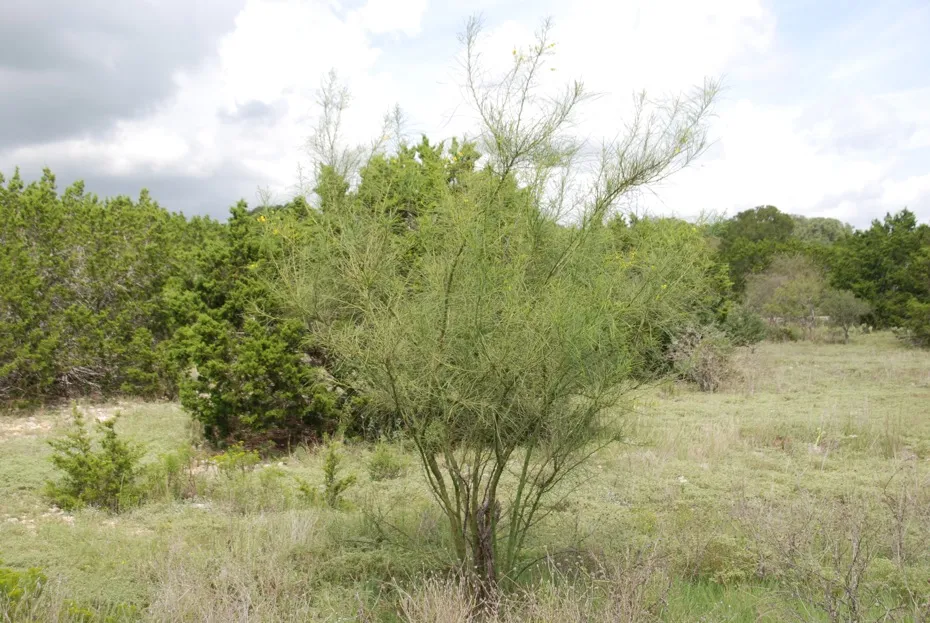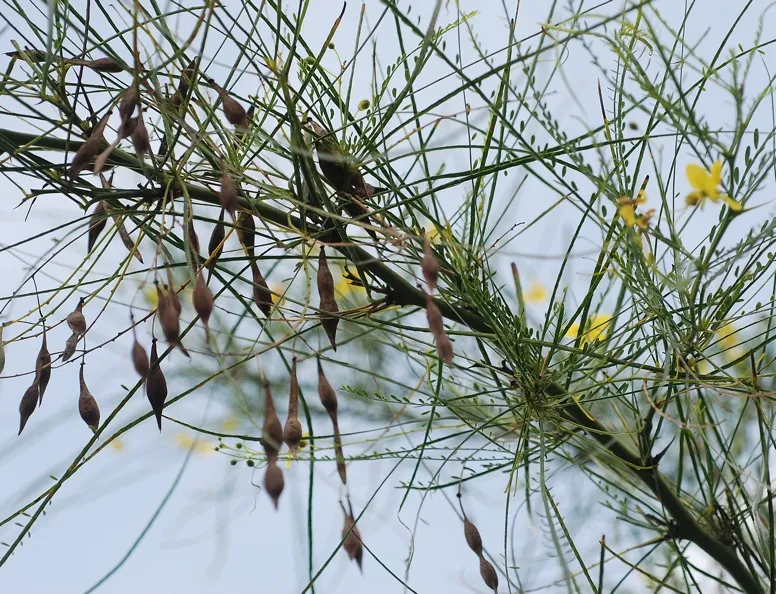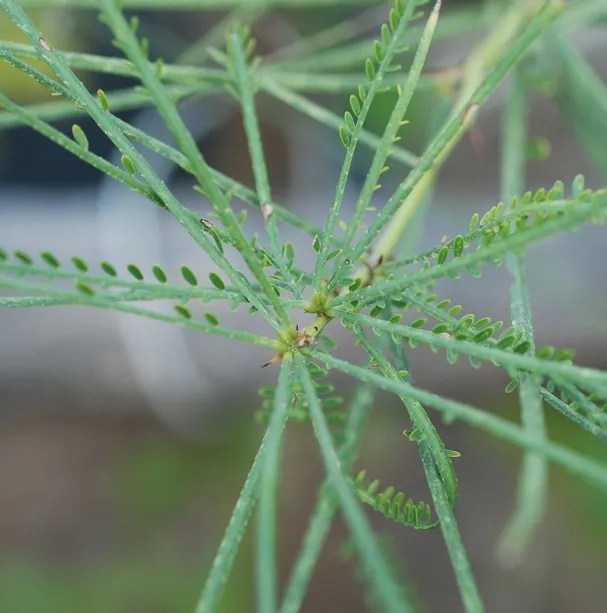By Delmar Cain
These cool mornings are very refreshing. The coffee smells better, tastes better and puts me in the mood to get the dogs out for their morning run. The lower temperatures also remind me that this is an excellent time of the year to put plants and trees into the ground, especially if you are like me and can count on your property some of 300 million trees in Texas that have been lost to the drought.

In 2012 the Boerne Chapter of the Native Plant Society of Texas (NPSOT) made drought survivors the theme of the NICE (Natives Instead of Common Exotics) program. The NICE Plant of the Month for October is on everyone’s list as a tree that requires little care and performs well even during the dry years. It is the Parkinsonia aculeate or as it is known by its many common names, retama, paloverde, Mexican palo verde, Jerusalem thorn, and Lluvia de Oro.
The retama is a small fast growing tree or spiny shrub, which will probably not exceed 20 feet in height, although examples have grown as tall as 30 feet. The crown at the top of the short green trunk is composed of graceful, spreading branches that remind me of the weeping willows that I remember seeing in East Texas. The slender branches, which also have green bark, have stout spines that can be an inch long.

Before we go any farther, I should warn you that if you need a shade tree, this tree does not meet that requirement. Each leaf is formed of two or more thin 10-18 inch long strips or midribs less than an inch wide. Along each midrib are up to 25 pairs of opposing leaflets, each leaflet being about 1/3 inch long. The leaflets grow shortly after a rain and fall off within a few days, leaving the midribs, which continue to function as a leaf. While in place the leaflets fold together at night. However, this is no shade tree even with the leaflets in place.
But the main attraction of the retama are the numerous sprays of yellow flowers that fill the branches during the warm months and more particularly after a rain. Each flower has five petals, with each petal being 1/3-2/3 inch long. One of the petals with a honey gland at its base soon turns red and remains longer than the other petals.
The retama or Jerusalem thorn is a native from Arizona to Texas and northern Mexico. It grows quickly in well drained, even poor soils, has a long bloom period and will survive with as little as 12 inches of annual rainfall. However, it performs best in full sun with adequate but not excessive moisture. With too little moisture it survives by dropping all of its leaves and using the green bark of the trunk and branches for chlorophyll production. With excessive moisture the tree can produce more seeds and become a problem as it did in Australia.

The paloverde is a good nectar source for bees and butterflies. Birds and small mammals eat the seeds. The flowers are fragrant and attractive. Both the foliage and the green bark have eye appeal. Deer may browse it.
With few insect or disease problems one would expect to find this tree in every yard in the Hill Country. And that may very well be the case if we continue to have the ever-warming climate that we have experienced in the recent past. The retama is cold hardy to Zone 8. That means that under good conditions it will tolerate a low temperature of 10 to 15 degrees Fahrenheit. I presume that it is for that reason that the Aggie-horticulture website indicates that the retama is “half-hardy to as far north as Dallas, if provided with the proper microclimate.”

I was unable to find a precise definition of a microclimate other than the climate of a small area. For example in your yard, one flower bed may get more sun than others, one corner bed may be more protected from the north wind by a wall and one bed may get more moisture because of slope and drainage. In our area the retama does not need protection from the sun, but it does need protection from lower temperatures and a cold north wind. Consider locating the retama where it will receive full sun but where it will not be exposed to an unimpaired north wind.
The one retama, which I tried to grow, died. It died after it was thoroughly browsed by deer. In the winter it froze. At some point fire ants made a home in its trunk. I now know that the real reason that the retama was less than “half-hardy” was that I failed to provide it with even a half proper microclimate. It was planted on the north side of the house with no wind protection and I didn’t cage it from the deer soon enough. I will do better on the next one.
Our other Boerne chapter members, who are fortunate enough to have living retamas, have great appreciation for them. You can find planting and care instructions for the retama on the chapter website at: http://www.npsot.org/wp/boerne/.


